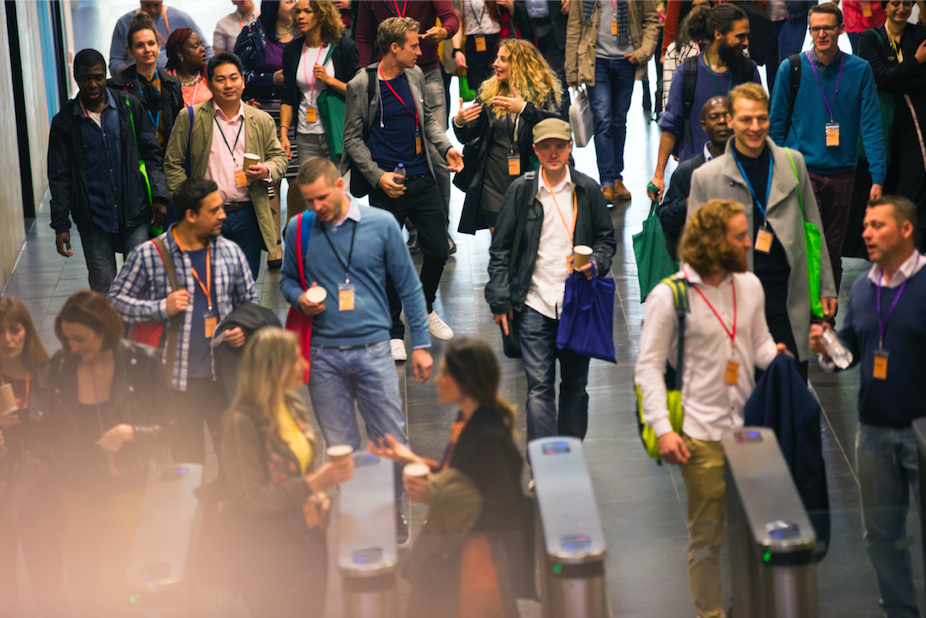25 Jun Facilities Show 2019: 4 key takeaways
The Facilities Show is the world’s largest dedicated FM event; this year’s event had over 12,000 attendees, 2,000 exhibitors and 100 breakout sessions. If you’re not familiar with it, you can learn more here.
I find events are a great place to share ideas, discuss challenges and see what’s going on in the market. In fact, my favourite part of any event are the chance encounters and conversations. Keynotes are all well and good, but I prefer two-way conversations to really start to understand the challenges organisations are experiencing and how Ricoh can support them.

We spoke to hundreds of attendees at the Ricoh stand, and some of us even found the time to stretch our legs and visit other exhibits. As we mingled and chatted our way through the day, there were a few things which kept popping up.
Before I get into it, I’d like to say a big thanks to everyone who dropped by the stand to chat and share ideas. And if you’d like any additional info on anything mentioned below, feel free to drop me a line on LinkedIn to carry on the conversation.
Meaningful productivity metrics
The debate around flexible working and empowering staff to ‘work their way’ within an office seems to be winding down. People don’t need to herded into an office in order to work. In fact, flexible and remote working policies are pretty much the norm based on the conversations I had. However, I’m also well aware that many organisations still have a long way to go.
Where staff are free to work away from their desk and even away from the office, how do we measure their productivity? Or, more to the point, how can we be sure remote workers are still working as hard as they would be in the office?
For years, we’ve talked about empowering staff and placing more trust in them. Is this desire for more metrics around productivity a sign of a lack of trust? Maybe I’m just an optimist, but I prefer to see it as a natural next step. We’ve introduced these policies, now we want to measure their impact. Whichever is the case, the hunt for meaningful productivity metrics is on.
Fad-free workplaces
Many conferences comes with their own fads – and the Facilities Show is no exception. It’s a great places to spot the latest workplace fads. Some years everyone seems to have the same idea. Last year, the fad in question was massage chairs. They were everywhere!
For what it’s worth, the massage chair thing seemed a bit misguided to me. If your staff need a massage, then they’re stressed out. Giving them a massage is treating the symptom, not the cause. You’d be better off finding out what it is about their work life that’s causing them stress and trying to resolve it.
This year, by contrast, was conspicuously fad-free. Which to me feels like a massive step forward. After all, creating great workplaces isn’t about jumping on the latest bandwagon. It’s about understanding your people and helping them to be the best that they can be.
On that note…
People-centricity
Regular readers will know that we’re all about creating people-centric workplaces. Understand your staff and how they work, then create workplaces that enhance the positives and minimise the negatives.
At this year’s Facilities Show, the people-centric approach seemed to be the order of the day. The human impact of workplace decisions and the psychology behind them was something that came up time and time again.
A lack of personal space seemed to be a common challenge. Workplaces may have shifted towards open plan or hotdesking. But that doesn’t stop humans from being fundamentally territorial. We want private space and when we don’t have any that plays on our minds. One of the facilities managers I spoke to recently introduced lockers and increased the amount of private areas in the office in order to balance out the reduced privacy of hotdesking. This is a great example of empathetic, people-centric thinking in action.
Another topic that came up was the need for greater collaboration between facilities, IT and HR to create more people-centric workplaces. And to ensure that solutions are integrative and take into account your people, processes and technology. It’s no use introducing a new room booking system but not integrating it with Office365, or showing people how to use it and explaining why it’s preferable to the current way of working.
Supporting diversity, inclusion and wellbeing
A people-centric workplace will support diversity and inclusion. After all, there’s nothing people-centric about the one-size-fits-all approach. A number of people I spoke to were wondering how the workplace can support diversity by recognising and celebrating our differences – right down to personality types.
Wellbeing was also a concern. As our working lives become more reliant on and mediated by technology, facilities and HR teams are asking themselves how the workplace can improve wellbeing. The conversation seems to have matured beyond massage chairs, mindfulness and an abundance of plants in the workplace. The focus seems now to be how can we create workplaces which make our lives better in a holistic sense. Rather than how can we mitigate the effects of overwork.
Thanks again to everyone who visited us at this year’s Facilities Show. It was a great event and you can be sure that we’ll be back next year.
In the meantime, if you have any questions on the above, feel free to get in touch. To learn more about empowering people and optimising workplaces, please check out our new guide Workplace Services.



